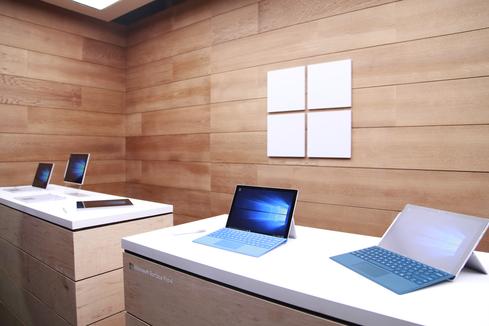Microsoft Earnings: Cloud Rises, Hardware Falls
Cloud computing continues to give Microsoft strength amid declines in hardware sales.
Surface Pro 4, Surface Book, Lumia 950: Microsoft's New Hardware Push
Surface Pro 4, Surface Book, Lumia 950: Microsoft's New Hardware Push (Click image for larger view and slideshow.)
Microsoft on Thursday shared its financial results for the first quarter of its 2016 fiscal year. Earnings reflect consistent strength in cloud services, declines in hardware, and higher revenue than predicted.
This is the first report that reflects Microsoft's new financial reporting structure, which was announced in September. These results are divided to reflect three new business segments: Productivity and Business Processes, Intelligent Cloud, and More Personal Computing.
Adjusted revenue for Q1 2016 was $21.7 billion and $.67 earnings per share. This is a decline from its revenue of $23.2 billion in Q1 FY2015, but greater than analysts' predictions of $21.03 billion and $.59 per share, reports Thomson Reuters.
[ Microsoft adds to its Enterprise Surface program. ]
Net income for this quarter reached $4.62 billion, or $.57 per share, an increase from $4.54 billion and $.54 per share year over year.
"We are making strong progress across each of our three ambitions by delivering innovation people love," said CEO Satya Nadella in a statement. He cites Windows 10, Office 365, Azure, and new devices as areas of strong interest among customers.
Let's take a closer look at the different financial reporting segments and results for each.
Productivity And Business Processes
This category consists of Office services, Dynamics, and Dynamics CRM. Revenue for this segment was $6.3 billion, a decline of 3%.
Revenue from Office commercial products and services was up 5%, and Office 365 revenue grew almost 70% during the quarter. Office 365 gained about 3 million subscribers to reach a total of 18.2 million users.
Intelligent Cloud
This segment includes server products and services such as Azure and Windows Server. Revenue for Intelligent Cloud grew 8% to reach $5.9 billion.
Server products and cloud services grew 13%. Enterprise Mobility customers doubled year-over-year to reach 20,000.
"Cloud continues to be the Rock of Gibraltar for Microsoft as this was a source of strength yet again in the quarter," Daniel Ives, FBC Capital Markets analyst, told Reuters.
The strength of cloud reflects the success of Nadella's mobile-first cloud-first vision, which has been at the core of his strategy as CEO.
More Personal Computing
The segment containing Microsoft's Windows OS licensing, hardware such as Windows Phones and Surface devices, and gaming products saw a significant 17% decline to $9.4 billion.
Microsoft's phone business accounted for much of the decline. Phone revenue tumbled 54% during this quarter, which Microsoft says is a reflection of its "updated strategy." Last quarter, the company's financial results suffered from a $7.5 billion write-down related to its Nokia acquisition one year prior.
This financial quarter included the July launch of Windows 10, which the company is giving away as a free upgrade for one year. The free upgrade is intended to drive adoption and broaden the Windows user base.
Microsoft also recently launched a series of new Windows 10-optimized hardware devices, including the upgraded Surface Pro 4 and Surface Book laptop.
About the Author(s)
You May Also Like








